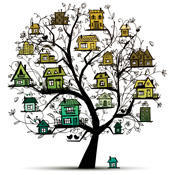A Better Birdhouse
We show you how to build a completely wired nest box that charts the movements of nesting birds and delivers photo images of hatchlings.

We show you how to build a completely wired nest box that charts the movements of nesting birds and delivers photo images of hatchlings.
In Germany, the word for “starling box” brings to mind pesky electronic traffic control systems. These are the boxes next to roads that contain equipment for capturing images of cars driving over the speed limit. However, speeding is not the topic of this article. Instead, I present information on building a nest box for starlings and other local birds – all of whom are confronted with an ever-decreasing supply of suitable brooding habitat.
The model of the nest box presented here offers some significant extras over ready-made products. A camera monitors what goes on inside the box, and two photoelectric sensors transmit the movements of the birds during feeding. The results are then displayed on a website.
When working on a project like this you should first put together a plan to get an overview of the steps involved. The most important part of the project is the nest box itself. Then, you will need a suitable camera, and, of course, you will want to know what kind of bird has taken up residence in the box.
[...]
Pages: 8
Price $15.99
(incl. VAT)